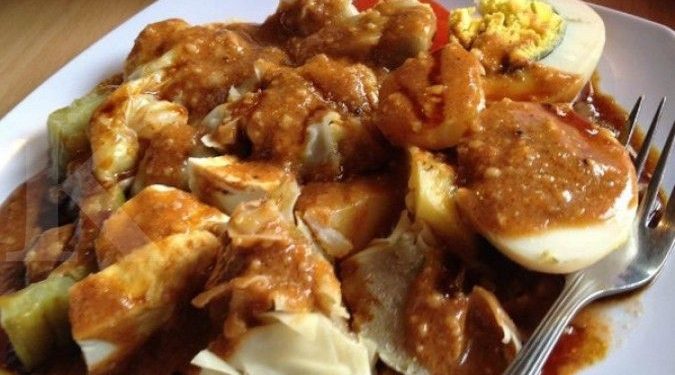Nasi goreng, bakso, and mie goreng are just a few other Indonesian dishes that’ll have you hankering for a cuisine that’s about as diverse and varied as the archipelago itself.
There are literally thousands of traditional Indonesian recipes.
Indonesian cuisine represents the food, recipes, and culinary heritage of the world’s largest archipelago. Indonesia is comprised of 17,508 islands (around 6,000 of which are inhabited) and over 600 ethnic groups, many of which boast their own regional cuisines and culinary traditions.
In all, Indonesian cuisine has about 5,350 traditional recipes. They vary greatly from region to region and exhibit many foreign influences.
In Sumatra for example, you’ll find curried meat and vegetable dishes shaped by Indian and Middle Eastern influences. Eastern Indonesian cuisine is similar to Polynesian and Melanesian cuisines while Javanese food remains mostly indigenous with just hints of Chinese influence.
This confluence of culinary influences is a direct result of Indonesia’s long history as a conduit for trade in Southeast Asia. It’s cuisine was greatly influenced by the cuisines of India, China, the Middle East, Portugal, Spain, and the Netherlands.
Because of its vast regional diversity, it’s difficult to characterize Indonesian cuisine, though like many of its Southeast Asian neighbors, Indonesian food can best be described as rich and complex, and intensely flavorful.
Siomay and batagor are Indonesian fish dumplings served with a peanut sauce. They’re both derivatives of Chinese shumai with the main difference being that siomay is steamed while batagor is fried.
To prepare, fish paste is stuffed into wonton skins and then either steamed or deep-fried. They’re typically made from tenggiri or Spanish mackerel though they can be made from other seafood proteins as well like tuna or prawn. As you’d expect, batagor tastes like a crispy version of siomay.
Originally from Bandung, siomay and batagor have become widely available throughout Indonesia and are often enjoyed as a snack. They’re typically served with peanut sauce along with condiments like kecap manis, sambal, and lime juice.



